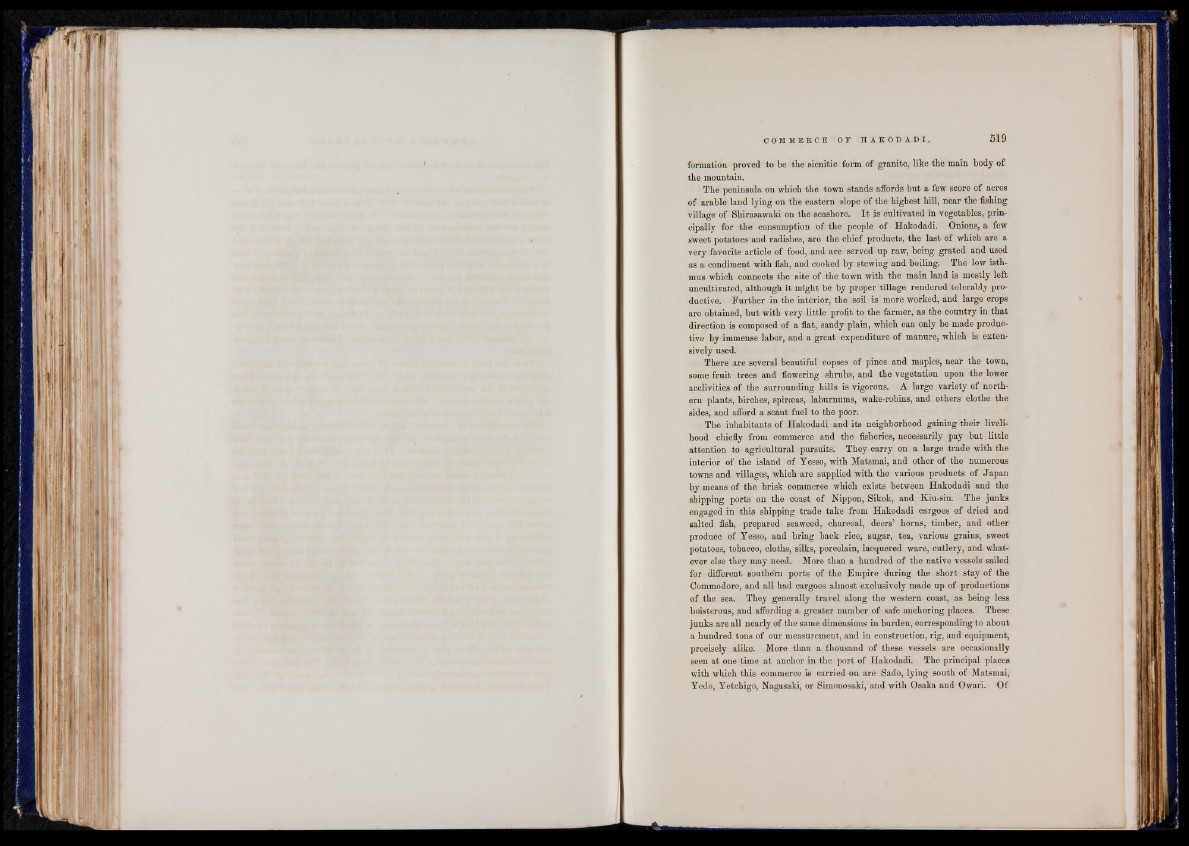
formation proved to be the sienitie form of granite, like the main body of
the mountain.
The peninsula on which the town stands affords but a few score of acres
of arable land lying on the eastern slope of the highest hill, near the fishing
village of Shirasawaki on the seashore. I t js cultivated in vegetables, principally
for the consumption of the people of Hakodadi. Onions, a few
sweet potatoes and radishes, are the chief products, the last of which are a
very favorite article of food, and are served up raw, being grated and used
as a condiment with fish, and cooked by stewing and boiling. The low isthmus
which connects the site of the town with the main land is mostly left
uncultivated, although it might be by proper tillage rendered tolerably productive.
Further in the interior, the soil is more worked, and large crops
are obtained, but with very little profit to the farmer, as the country in that
direction is composed of a flat, sandy plain, which can only be made productive
by immense labor, and a great expenditure of manure, which is extensively
used.
There are several beautiful copses of pines and maples, near the town,
some fruit trees and flowering shrubs, and the vegetation upon the lower
acclivities of the surrounding hills is vigorous. A large variety of northern
plants, birches, spiroeas, laburnums, wake-robins, and others clothe the
sides, and afford a scant fuel to the poor.
The inhabitants of Hakodadi and its neighborhood gaming their livelihood
chiefly from commerce and the fisheries, necessarily pay but little
attention to agricultural pursuits. They carry on a large trade with the
interior of the island of Yesso, with Matsmai, and other of the numerous
towns and villages, which are supplied with the various products of Japan
by means of the brisk commerce which exists between Hakodadi and the
shipping ports on the coast of Nippon, Sikok, and Kiu-siu. The junks
engaged in this shipping trade take from Hakodadi cargoes of dried and
salted fish, prepared seaweed, charcoal, deers’ horns, timber, and other
produee of Yesso, and bring back rice, sugar, tea, various grains, sweet
potatoes, tobacco, cloths, silks, porcelain, lacquered ware, cutlery, and whatever
else they may need. More than a hundred of the native vessels sailed
for different southern ports of the Empire during the short stay of the
Commodore, and all had cargoes almost exclusively made up of productions
of the sea. They generally travel along the western coast, as being less
boisterous, and affording a greater number of safe anchoring places. These
junks are all nearly of the same dimensions in burden, corresponding to about
a hundred tons of our measurement, and in construction, rig, and equipment,
precisely alike. More than a thousand of these vessels are occasionally
seen at one time at anchor in the port of Hakodadi. The principal places
with which this commerce is carried on are Sado, lying south of Matsmai,
Ycdo, Yetohigo, Nagasaki, or Simonosaki, and with Osaka and Owari. Of